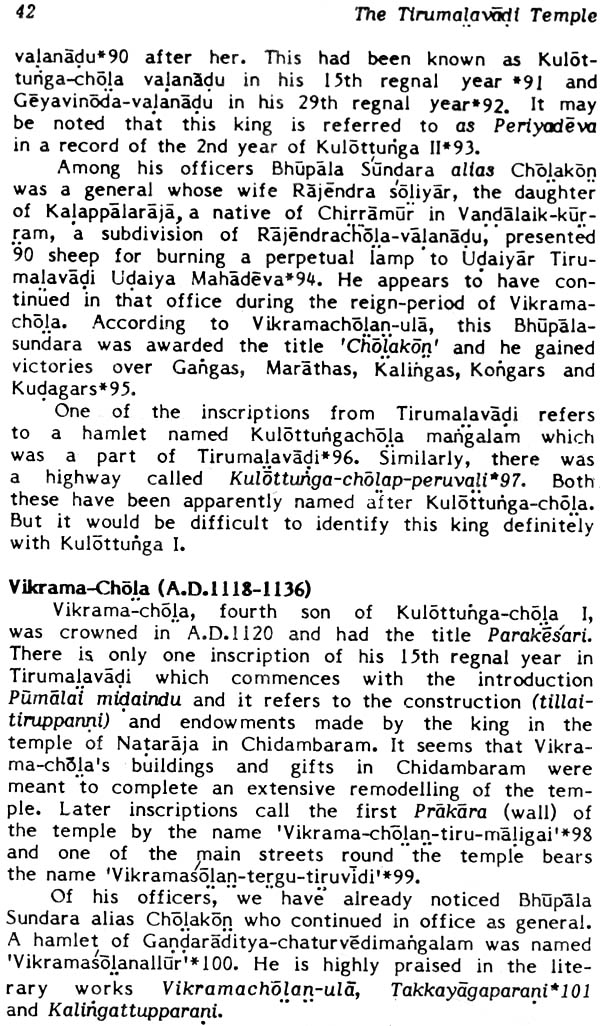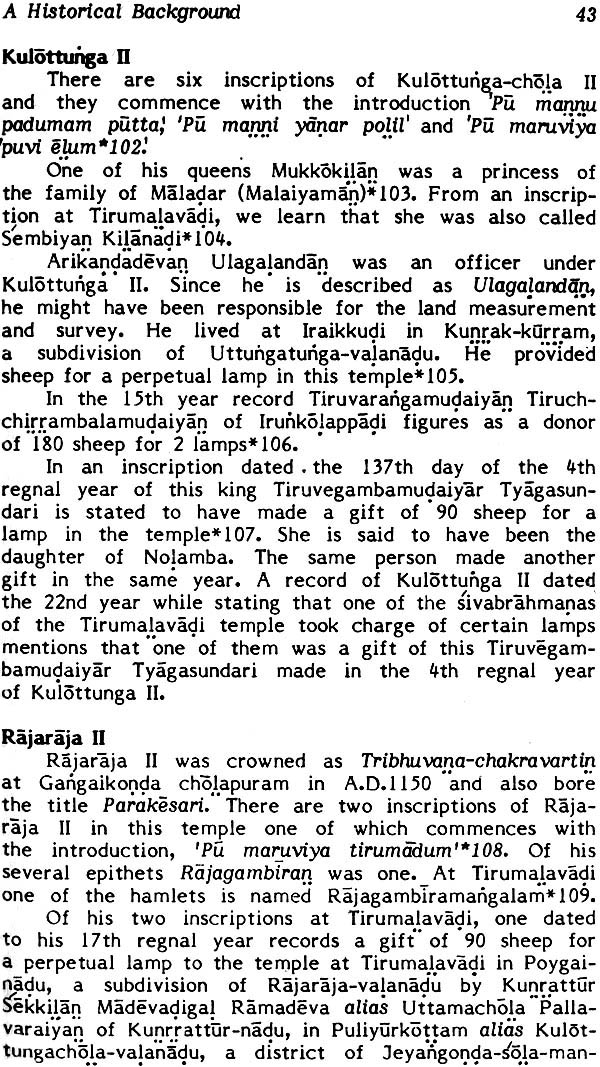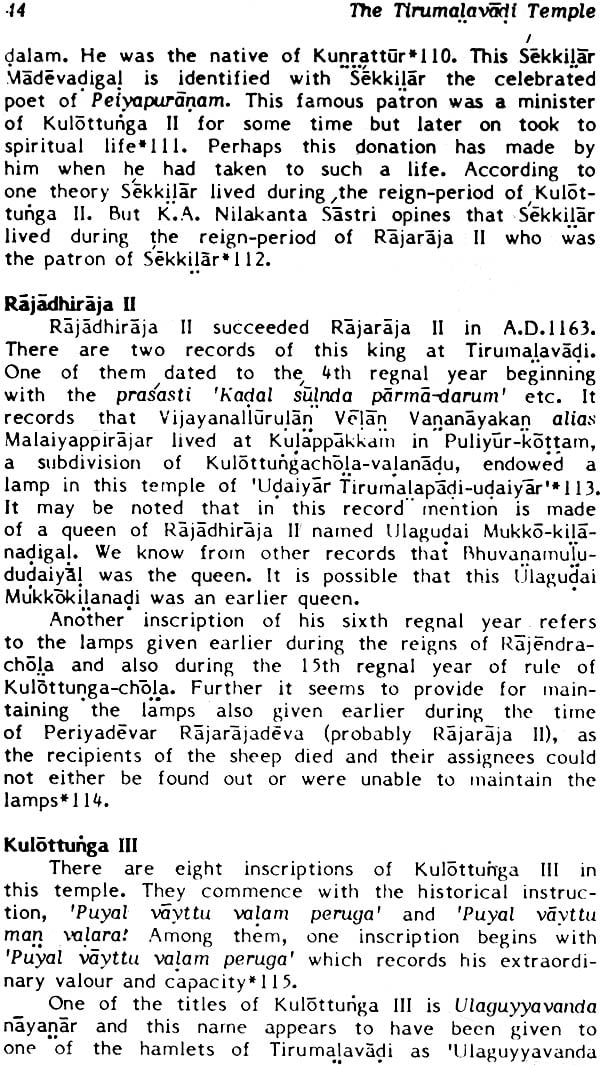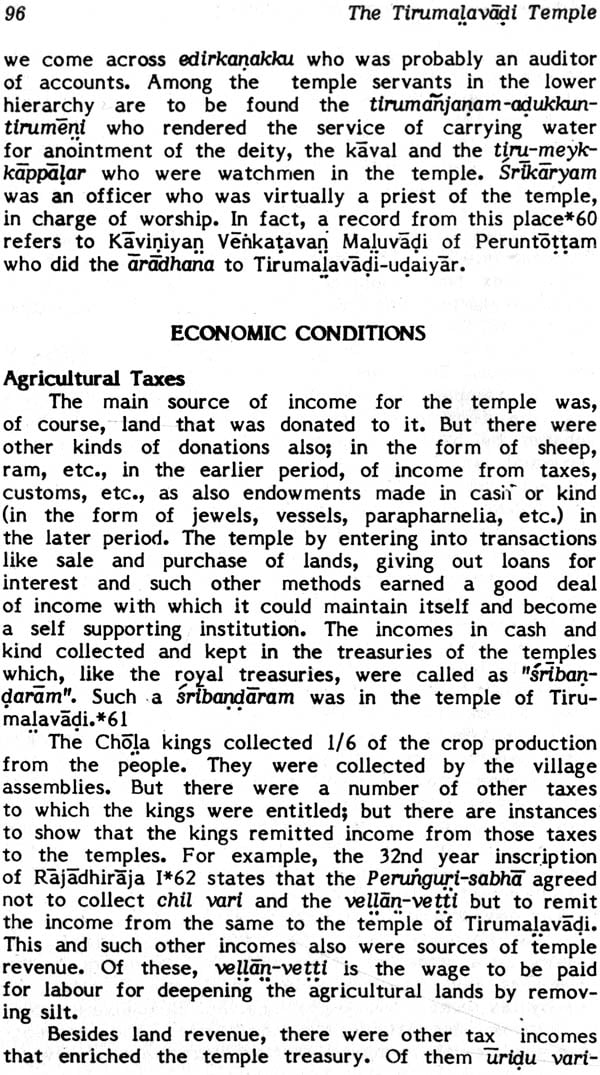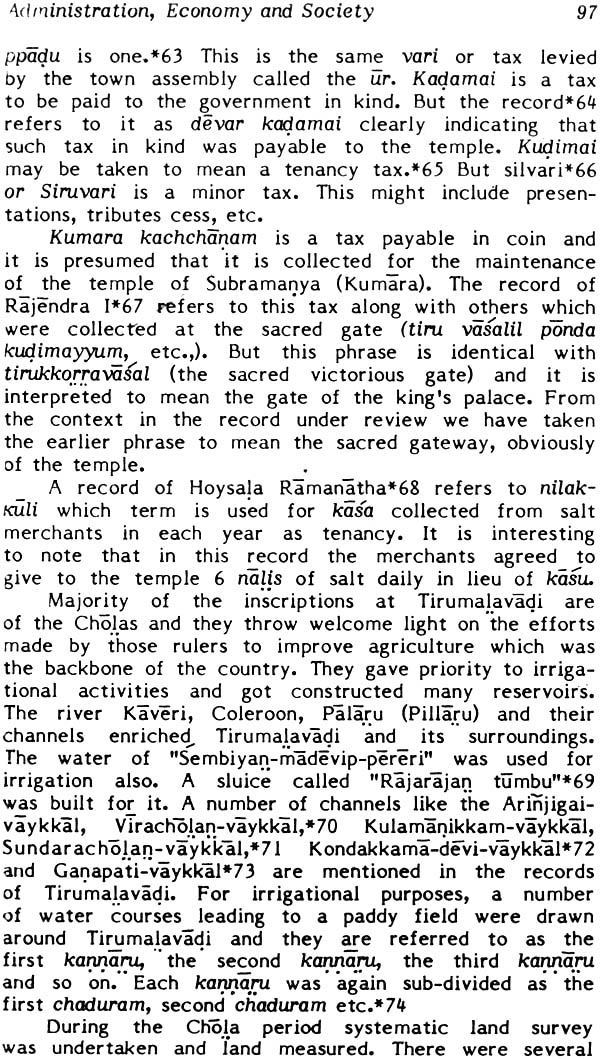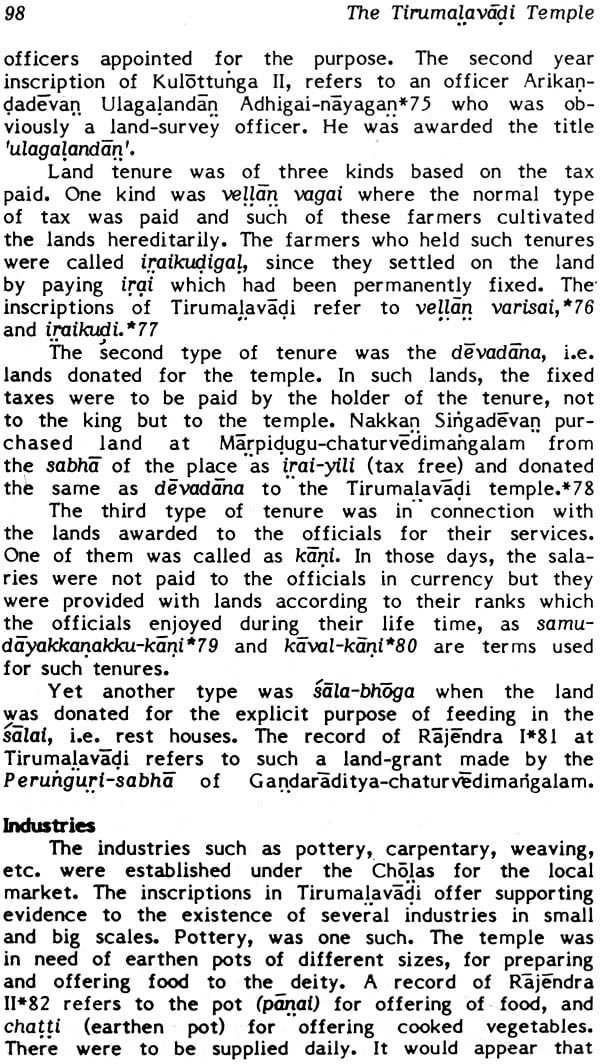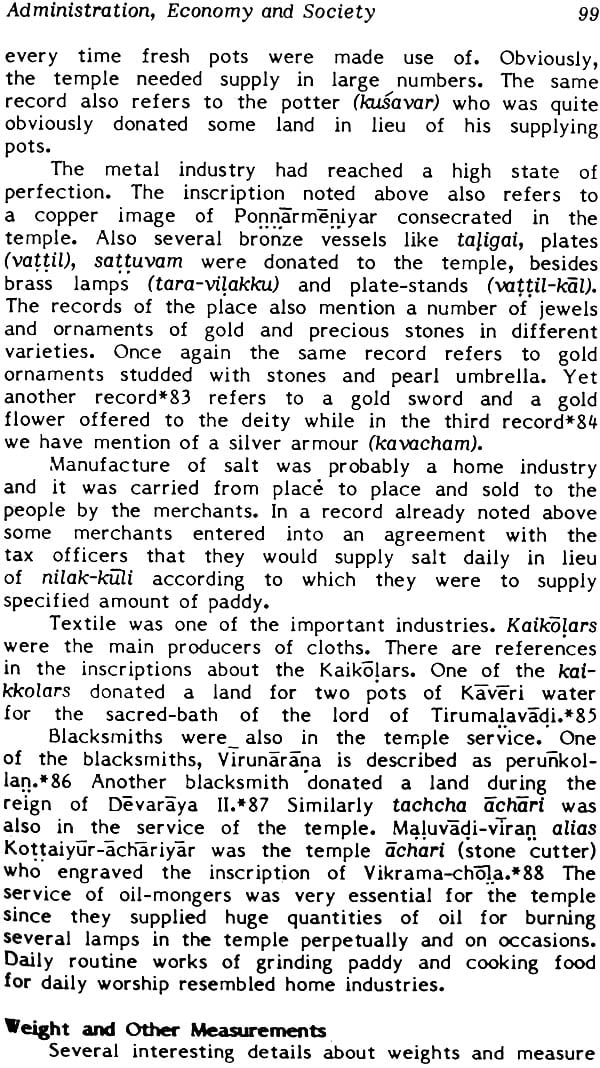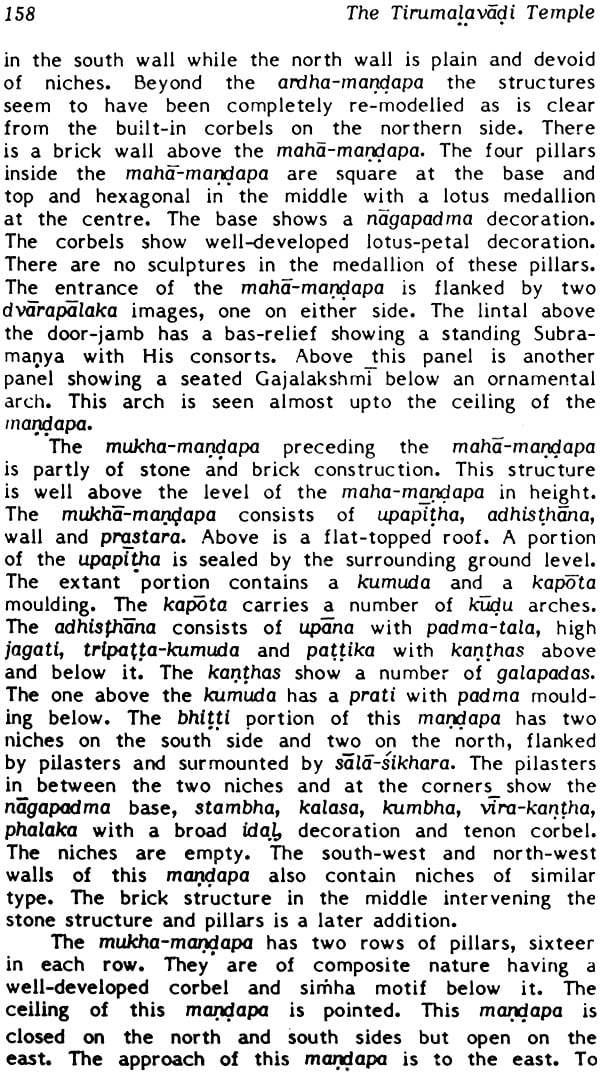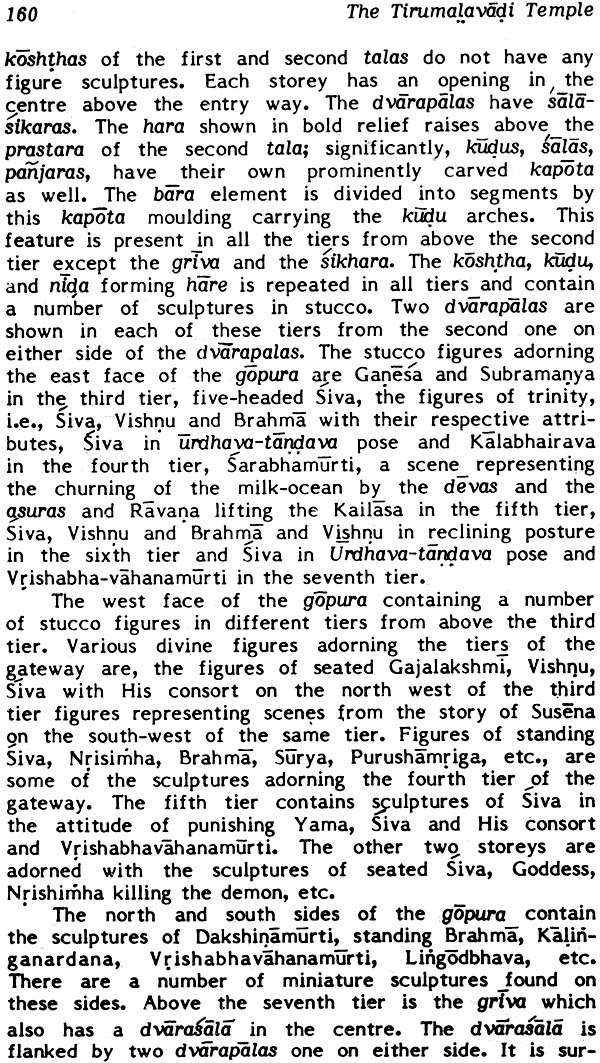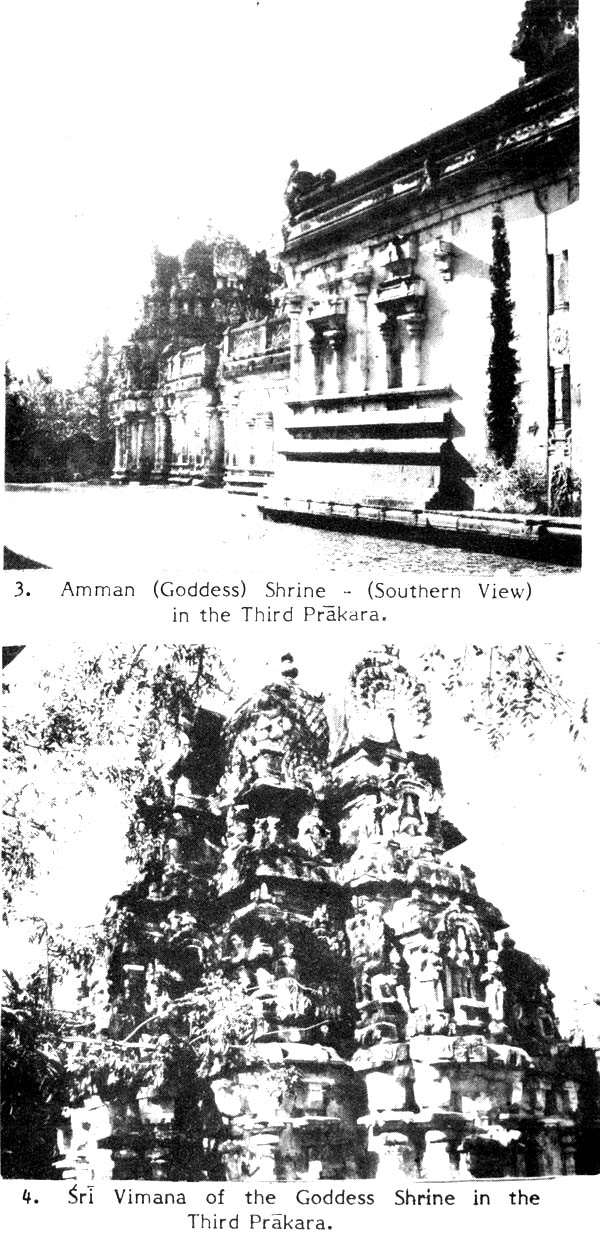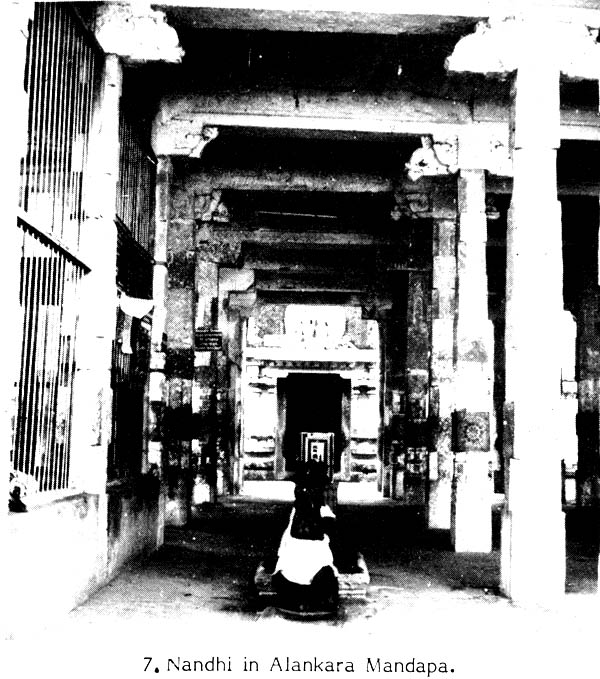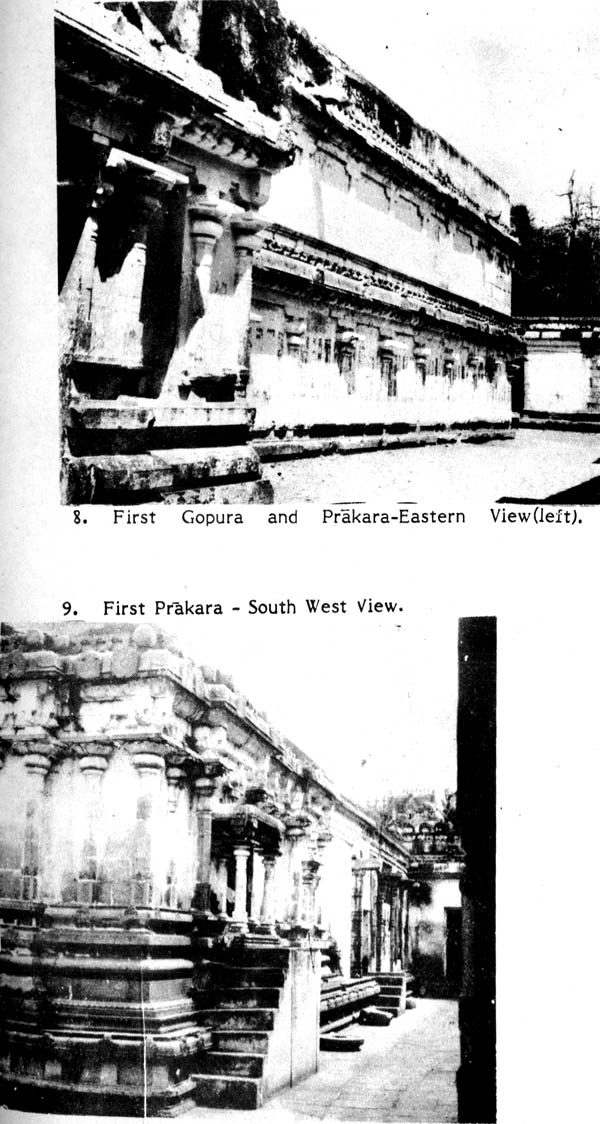
The Tirumalavadi Temple (An Old and Rare Books)
Book Specification
| Item Code: | NAL118 |
| Author: | C. Mookka Reddy |
| Publisher: | B.R. Publishing Corporation |
| Language: | English |
| Edition: | 1986 |
| ISBN: | 8170183294 |
| Pages: | 236 |
| Cover: | Hardcover |
| Other Details | 8.5 inch x 5.5 inch |
| Weight | 490 gm |
Book Description
Tirumalavadi, an ancient town in Ariyalur Taluk, is situated 55 km away from Tiruchirappalli town on the northern bank of the river Coleroon. It was one of the capitals of Kulottunga Chola I. The temple of Sri Vadyanathaswami has been in existence for more than one thousand five hundred years. It is a sacred place for the saivites. Lord Vaidyanathaswami is praised by the famous saiva saints Appar, Sambandar, Sundarar and Ayyadigal Kadavar Kon.
There are hundred and fifty long historical inscriptions on the walls of the temple. They belonged to the periods of the Cholas, the Pandyas, the Hoysalas, the Vijayanagar kings, etc. They help us to know the political history which plays an important role in the changes of the social conditions. It exposes the developments of the economic conditions and changes there on, of the people through the ages. Chatrapati Sivaji encamped for twenty two days in this temple Hyder Ali Khan of Mysore also stayed at Tirumalavadi for some time. Thus the temple of Tirumalavadi. plays an important role in the history of Tamil nadu.
This monograph gives a comprehensive study of the Temple at Tirumalavadi. The author believes that it is a distinct contribution to our knowledge of South Indian History.
Dr. C. Mookka Reddy, born in 1936, hails from Tamilnadu. He took his B. A Degree from the University of Madras in 1967 and M.A. Degree from Sri Venkateswara University in 1973. In 1968 he did his B. Lib. Sc. Course in the Kerala University. And in 1981 he was honoured with Ph.D. Degree by the University of Mysore. Since 1968, he has been working as Librarian at Sri Vasavi College, Erode.
Dr. Mookka has published as many as six- teen research papers and attended several conferences and seminars. His Ph.D. research project was on "Tirumalavadi Temple". It was an original study which reveals several aspects on the Social, Political, Economic and Religious conditions of the period. He is now the Director of Sri Vasavi College History Museum and has taken several research projects in his field of specialisation.
I am happy to introduce this scholarly work to the research world. As a co-researcher I accompanied Dr. C. Mookka Reddy to the Temple of Tirumalapadi and assisted him in all his activities. The remnants of historical monuments scattered through the length and breadth of this ancient city. Situated on the western bank of the river Coleroon the Temple stands as a glorious monument of the Tamil Country. There are remnants of ancient forts, temples and in many places brick walls which suggest the rich heritage of this area. It is said that even the course of the river Coleroon was changed and brought about changes in the life of the people. This is a pioneering work in this field. For the first time history and culture of Tirumalapadi was brought to light in this work.
The sources for the present study were mainly epigraphy. There are as many as 200 inscriptions in different places and walls of the temple. These evidence are the standing testimony to the political social and economic history of this area. In fact temples in Tamilnadu had unique place in the society and played considerable robe in the human life. The Tirumalapadi Temple is one such temple in Tamilnadu. This work will certainly fulfil the aspirations of the Tamil scholars and Tamil Society and fill in the ,gaps in the history in Tamilnadu.
The author has presented the facts in five major sub-divisions. The Temple Lay Out, Political, Social, Economic, Religious & Cultural are the divisions which are elaborated straightly following the chronological order. The Temple stands from the days of the "Sangam Age" and has legends like all other important temples in Tamil Country. The evidence reveal that the Temple and the city were located in the Chola-mandalam. The area was found to be fertile and so it was generally called as the 'Valanadu'. The Valanadu consisted of several political units and the temple existed in Poyai-nadu during the period of Imperial Cholas, The records reveal that Tirumalapadi was a 'devadana' in Poygai-nadu. The present work traces the facts from the earliest records and traces the history of the temple.
The evidences show that the temple was built In the early Chola period and was brought under the control of the Later Cholas. The Pandyas, Hoysalas, the Nayaks and the Marathas came one after the other and contributed much to the temple and the people of this area. The temple was in existence during the reign of Aditya Chola II and it was the earliest record available presently. This work brings to light the contributions and services made by the Cholas of the second line and evaluates the facts. In fact they made several additions and grants were made available in plenty. This work gives details on the temple out lay as found today. But the entire temple complex was disturbed many times and they were rebuilt and several additions were made inside the temple complex.
As such the present work traces the history of the Temple at Tirumalapadi through the ages, even up to the British conquests. This is one of the records of the social, economic and cultural aspects of the Tamil Country. It is a fact that the scholarly world expects many more works in this model covering all important temple in Tamilnadu, Another aspects is this will set an example to the future scholars and many more such studies could be taken in future. Lastly, this work is a proof to show that the historical account of the temples might throw much new light on the history of Tamil Country. I hope the scholarly world will appreciate this work and accepts the contributions made by the author.
| Preface | v | |
| Introductory Note | vii | |
| Abbreviations | xi | |
| 1 | Introduction | 1 |
| 2 | Tirumalavadi: Through the Ages-A Historical Background | 27 |
| 3 | The Temple Lay Out | 69 |
| 4 | Administration, Economy and Society | 89 |
| 5 | Rituals and Festivals | 117 |
| 6 | Art and Architecture | 135 |
| 7 | Conclusion | 165 |
| Appendices | 169 | |
| Bibliography | 225 | |
| Index | 231 | |
| Plans & Plates |
